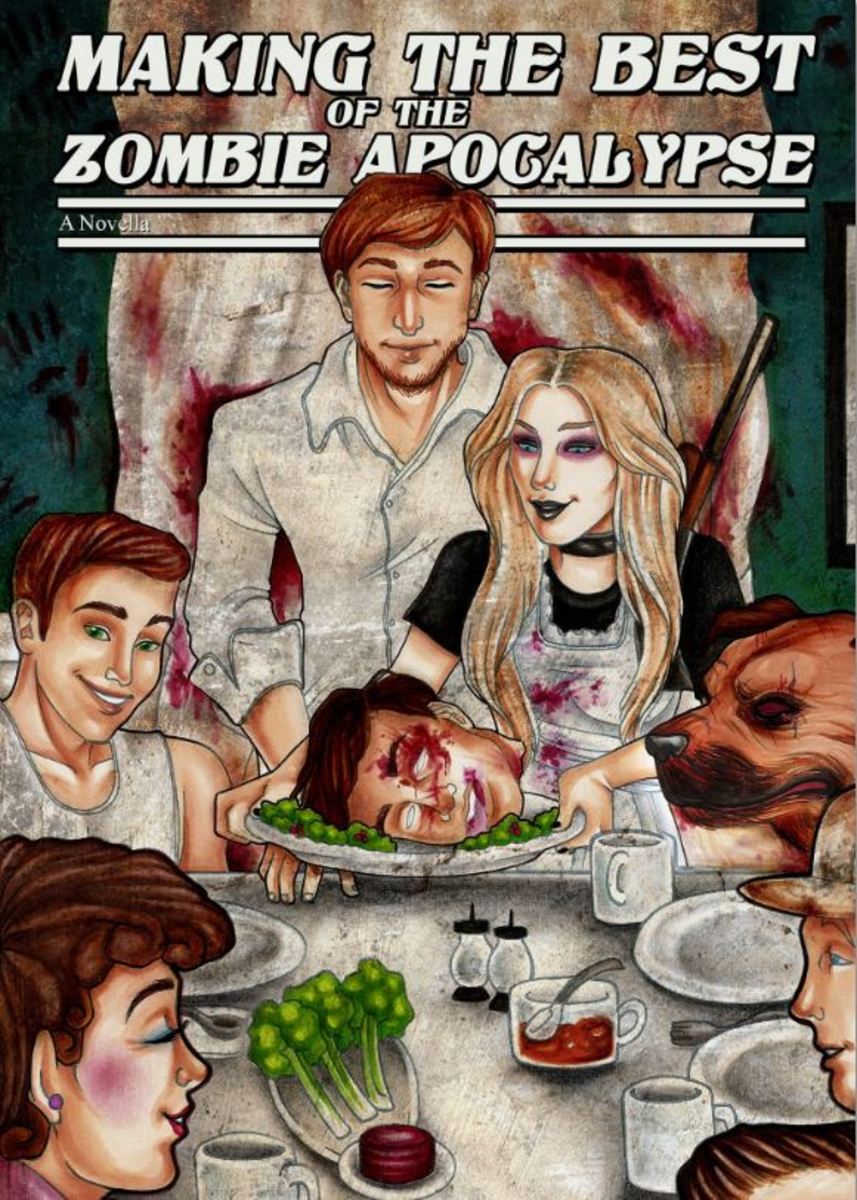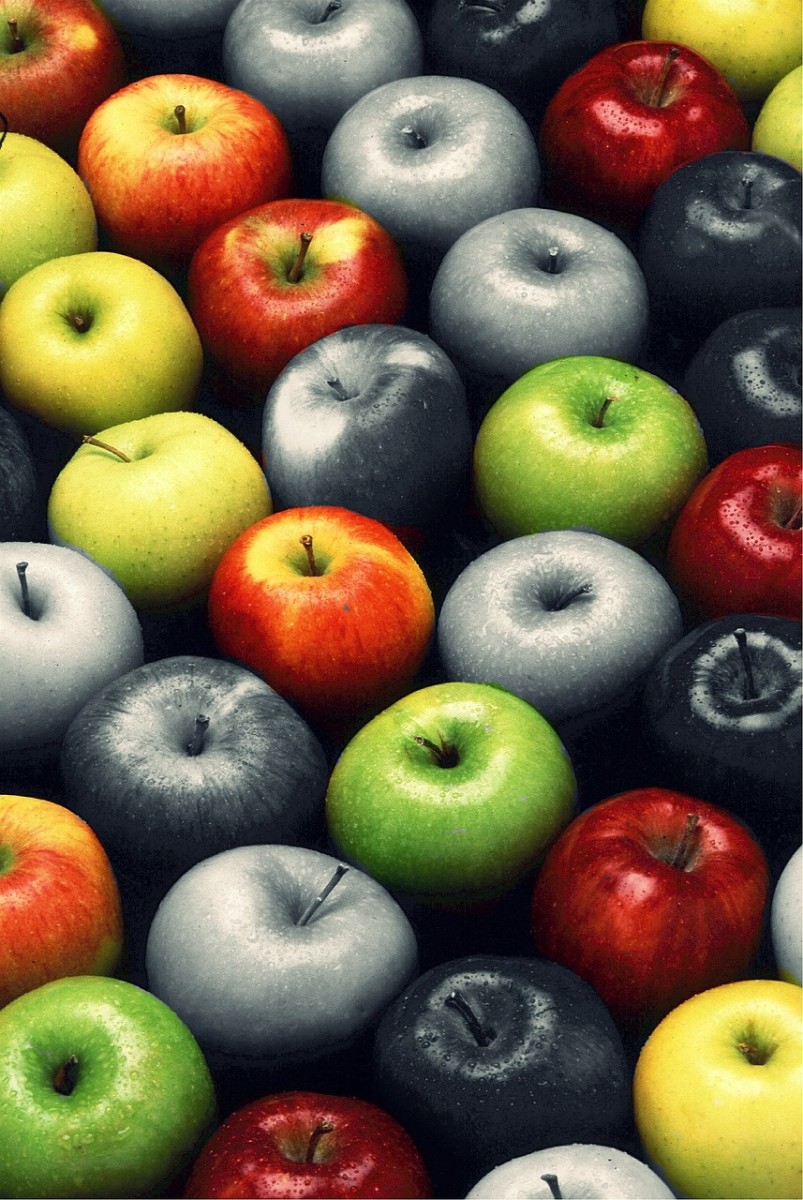Foods Banned in Europe, Why Not in America?
Food for thought?

Banning Food Products
While the European Union (EU) continues to ban or require labeling on foods that are subjected to irradiation and genetic modification, the US still thinks a ban is not necessary. The belief is that people living in the EU have a right to know what's in their food or what has been done to it.
Meanwhile, I need to add that many other countries have no need to ban these questionable food practices because such is not permitted in the first place. For example, over a 4 year period, when I lived in S. Korea, food was expected to be quality, fresh and locally grown. When Wal-Mart promised such foods and did not deliver, the women refused to buy their produce and put Wal-Mart out of business. When America demanded that S. Koreans accept American beef, thousands took to the street in protest. I agreed because millions of pounds of beef are recalled annually here in the US.
What about those millions of pounds of beef?
Despite millions of pounds of beef being recalled annually as well as other foods, (drugs, supplements, household products, etc. - see links below), we still continue to trust manufacturers who are only required to monitor themselves. We still rely on food that is overwhelmingly processed with 70% of it having genetically modified (GM) ingredients.
Have you figured out yet what happens to the millions of pounds of beef that is recalled? Sometime ago I contacted the USDA for an answer. See if you can guess what happens to the recalled beef.*
In the meantime, beef continues to be sold to the American shopper and to schools and millions of pounds continue to be recalled.
Here are some questionable food practices:
Genetically Modified Foods:
I recently read that 80% of the American diet consists of processed food. If you walk into an American supermarket, the shelves are filled with thousands of boxes and cans (even though cans are lined with the chemical BPA), as well as frozen packages, and all the snack junk - this is our diet. The fruit and produce aisle is usually somewhere off to the side. It gets worse - because 70% of all that packaged food is genetically modified (GM).
Our corn and soy is GM. So is canola oil (canola oil is GM rapeseed oil from Canada - thus the 'can' in canola oil) and then there is cottonseed oil. If you are eating a bag of potato chips right now - it may have cottonseed oil. In addition to all we've read about how unhealthy potato chips are, cotton is one of the most heavily 'sprayed with pesticide' crops.
There are people who believe that the epidemic of allergies, asthma, skin problems, and chronic ailments are due to GM foods. In the EU, if a GM product is .9 percent or more it must be labeled. In the US, labeling is not required.
Why is it so hard to grow healthy food?
Actually it's not - please see the link below for an urban farmer who got tired of seeing sickness and obesity in young children in his community - and created a massive year round farm right in the city of Milwaukee. He was also recognized by the MacArthur Foundation with a Fellowship Award. Surprisingly, right here in NYC, people are taking to vacant lots and roof tops, more than ever, to grow food.
Irradiation:
The US Food and Drug Administration has approved irradiation, since 1963, to kill dangerous organisms in beef, pork, chicken, lamb, herbs, spices, flour and fruit and vegetables.The EU only permits it on dried spices, herbs and vegetable based seasonings.
There are those that argue that with food-borne illnesses killing at least 5,000 people annually, irradiation is necessary - despite the fact that critics warn the process destroys nutrients. But I think we should be asking ourselves why our food is so filthy that practically all of it must be irradiated. (This corresponds with my USDA beef response below).
Antibiotics:
To get bigger, fatter animals, the US gives antibiotics to 70% of its healthy livestock. This practice can create drug-resistant campylobacter (according to kidshealth.org this is a bacteria transmitted by contaminated food and water, affects over 2 million people per year, and is a leading cause of food-borne illness in the US).
For some unknown reason children in our schools are still given containers of milk and there are no labels to indicate that the milk is free of bovine growth hormones. The breakfast program usually provides something like milk and cereal (a breakfast of bovine growth hormones and GM corn products). Our children overwhelmingly have weak immune systems because breastfeeding is not embraced in the US culture. Sometimes chocolate milk is offered. I read a label and it contained partially hydrogenated oil which no one is supposed to digest any longer. Least of all children.
When I lived in Seoul, all children were guaranteed a full Korean style lunch which includes rice, soup, a minute bit of protein, always kimchi, another veg, and fruit, all freshly made - while our children are given nuggets of something, french fries, packaged stuff, even beef products that sometimes make it on the recall list. Korean children do not suffer from obesity nor does the general population.
Dyes:
Despite the fact that dyes added to our processed foods may cause behavioral problems - they remain on the market. The D.C. based Center for Science in the Public Interest (CSPI) has asked the FDA to ban certain dyes that may cause hyperactivity in children (in the wake of a 2004 analysis). Dyes in question are red 40, red 3, blue 1, blue 2, green 3, yellow 6 and orange B. These colorings are found in snack chips, candy, crackers, those awful colored drinks, that awful macaroni and cheese product, vitamins and much more.
- Check the CSPI website for more information @ cspinet.org (the CSPI is urging the FDA to crackdown on false and misleading food labeling, and there is a recent report on a troubling decline in foodborne outbreak Investigations, and much more).
- Check the Institute for Agriculture and Trade Policy's Online Brain Food Selector (iatp.org/brainfoodselector)
- Check hub pages for a wealth of healthy living and eating suggestions.
The EU requires labeling of foods containing particular synthetic dyes linked to behavioral problems in children.
What happened to the recalled beef?
* In 2007 it seems everyday I heard on the news that millions of pounds of beef were recalled - where did it go? I kept waiting for a big bon fire somewhere in the wide open desert where this would all be dumped by the ton(s) and destroyed - but it never happened. Here we are ending 2009 and no bon fire of the tons of recalled beef. So where is it?
Actually in 2007 I contacted the USDA and asked what happens when beef is recalled. I got a very nice response from the meat and poultry hotline - they have a virtual representative at: askkaren.gov - the response:
"It depends on the reason the product is recalled. If it is recalled for bacteria and it is determined that the meat can be made safe by processing, it will be used in a product that is thoroughly cooked. If it is recalled for a problem like improper labeling it can be relabeled."
(As mentioned above, the CSPI reports that inaccurate and misleading labeling is still a problem)
Yes, the beef is not destroyed by the large manufacturers - it is back on the supermarket shelf in those cooked canned products with beef and those frozen products with beef. No labeling is required so we don't know exactly who is using the recalled product. And we also know why irradiation is so important for American food products. If you google or yahoo recalled beef there will be hundreds of reports about millions of pounds of recalled beef - and for years, much of it winding up in schools.
What about our children?
Honestly, I think our children deserve better. Of course we do too as adults but adults have a tendency to make excuses - but can we continue to make excuses when it comes to feeding this to our children? Who doesn't pay good money for these products?
There are also many non-food products that are banned or simply not used in the rest of the world - see links below.
In doing research, I found the topic overwhelming and tried to keep this short by limiting it to food - and including links for other issues affecting health.
About Our Food and Children
What Is Your Thought About The Food Given to Our Children
A Little Humor About Food
- What to Do if You Drop Food On the Floor
As children we had this figured out; dropping food on the floor was never a problem because we ate it anyway. My cousin tells me that in his part of the city, all children lived by the five second rule - 'if...
The Urban Farmer
- A MacArthur Fellowship for an Urban Farmer: Will All...
Will Allen, of Milwaukee, Wisconsin has decided to make it his mission to bring affordable healthy food to families in city neighborhoods that generally lack quality fresh food. In 1995, he established a...
Are Your Personal Care Products Safe?
- The Ugly Beauty Products
Often the beauty and personal care products we buy in our search for beauty and good health are in fact filled with toxins. The synthetic chemicals mimic estrogen and studies indicate that exposure to... - Are There Any Safe Hair Dyes?
Many hair dye companies have jumped on the natural hair dye bandwagon offering products labeled 'natural' but the consumer needs to be educated and cautious. Hair dyes used on darker color hair are often...
Household Safety
- Are Low Energy Bulbs Harmful to Your Health?
Can low energy bulbs be harmful to your health? Yes, according to medical experts in the UK. While the bulbs are touted as requiring low energy and therefore lower costs to run, the issue of the high... - Is Your Toilet Paper Hurting You? Ow!
It all started innocently enough - my horror story. You just cannot run out of toilet paper - because it's just wrong. So one fine sunny day, on my way home, I knew all I had was what was hanging on the... - Why You Should Never Use Vinyl Shower Curtains
Why shouldn't you use vinyl shower curtains? They are cheap, easy to find, and some may even be mildew-resistant. But they are also toxic. Vinyl (PVC - also known as polyvinyl chloride) shower curtains... - Using Zero VOC Red Paint in My Living Room
this came out even better than I expected Our homes are filled with products that are toxic, and one of the worst products is paint. Generally, the paint we use has VOCs - or volatile organic compounds. VOCs...








